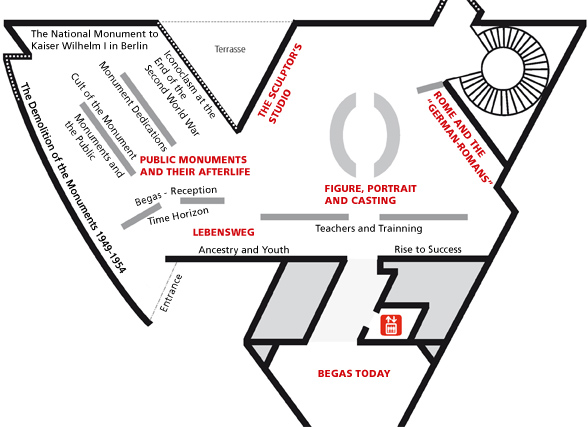

Iconoclasm at the End of the Second World War
Outbreaks of iconoclasm, which people on all continents have carried out from time immemorial, are directed against monuments of a discarded system. A large part of the political memorials created by Begas were victims of wilful destruction at the end of the Second World War. Russian soldiers triumphantly fired at the Germania group atop the gable of the Reichstag to demonstrate their victory. Statues were shot at in the face, beheaded, beaten or knocked off their pedestal. These were acts of degradation, desecration or execution in effigy – in place of the historical persons they were aimed at. These acts turn the originally intended function of the monuments – appreciation and honourable commemoration – into its opposite: destruction. The ideologically motivated iconoclasm at the end of the Second World War was directed against monuments from the Nazi period, but at the same time against those of the German Empire. It was not the revolutionary soldiers of 1918/19, but rather the political forces after 1945 which, only after a long gap in history, turned against the Hohenzollern monarchy. In this way they meant to imply that it was the negative development and consequence of Prussian militarism that led to National Socialism.

